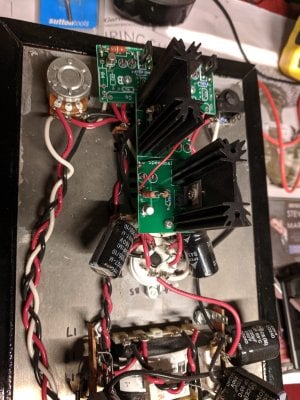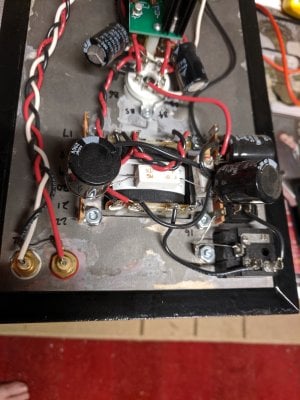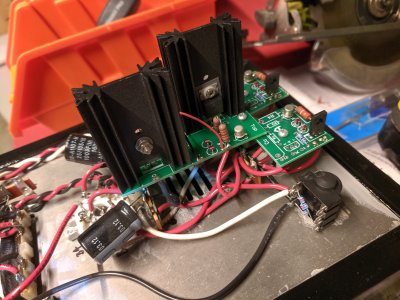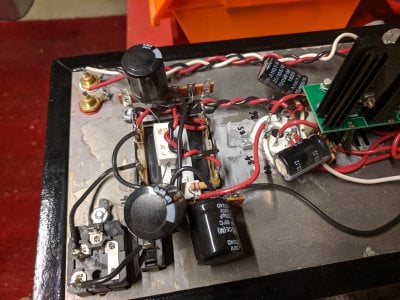hardisondan
New member
Hello,
I'm back after a long hiatus. I looked up my last post and it was 2014. That was when I finished my Crack. After some newbie challenges, I got there and I was really happy with it. It sounded great, and I was constantly amazed at how dead quiet it was, even with volume turned way up there was no background hum or noise of any kind. I PROBABLY SHOULD HAVE LEFT IT ALONE.
Anyway, I attempted the speedball upgrade and it was a big fail. Main tube glows, but no sound. No LEDs on near the small tube. It has been in mothballs for the last five years.
Now I am ready to tackle it again. I have a shiny new soldering station and a new can-do attitude. I am going to re-do the tests to try and narrow it down. I have three questions:
- Firstly, if you had to bet on it, what would be the number one thing people stuff up when adding the speedball?
- Do the resistance check measurements in the Crack assembly manual apply post-speedball? I don't think there was a resistance check list in the speedball assembly manual (but I could be wrong)
- I just noticed on re-reading the Crack manual, that the section on voltage checks mentions they were taken at 110V AC. I am in Australia, so 240V. Does this have any bearing on expected voltage test results?
You might be hearing from me more.
Dan
I'm back after a long hiatus. I looked up my last post and it was 2014. That was when I finished my Crack. After some newbie challenges, I got there and I was really happy with it. It sounded great, and I was constantly amazed at how dead quiet it was, even with volume turned way up there was no background hum or noise of any kind. I PROBABLY SHOULD HAVE LEFT IT ALONE.
Anyway, I attempted the speedball upgrade and it was a big fail. Main tube glows, but no sound. No LEDs on near the small tube. It has been in mothballs for the last five years.
Now I am ready to tackle it again. I have a shiny new soldering station and a new can-do attitude. I am going to re-do the tests to try and narrow it down. I have three questions:
- Firstly, if you had to bet on it, what would be the number one thing people stuff up when adding the speedball?
- Do the resistance check measurements in the Crack assembly manual apply post-speedball? I don't think there was a resistance check list in the speedball assembly manual (but I could be wrong)
- I just noticed on re-reading the Crack manual, that the section on voltage checks mentions they were taken at 110V AC. I am in Australia, so 240V. Does this have any bearing on expected voltage test results?
You might be hearing from me more.
Dan




